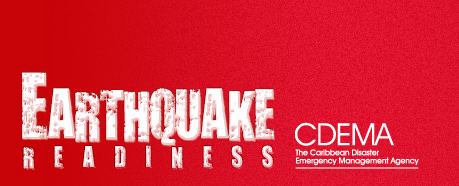Impact of an Earthquake
It's not the Earth's shaking itself that causes the most injury
and harm. Instead, it's the things that the earthquake puts
into motion: the shaking of buildings, structures, and even ordinary
household items. Anything that can move, fall, break or cause a fire can be
an earthquake hazard. During the shaking, cabinets and bookcases topple,
objects fall out of cabinets, and hanging or large plants fall.
Door frames and window jambs may be bent when walls
move. Doors may slam or jam shut, and window glass
can shatter, sending broken glass into the room.
Objects mounted on the walls (such as clocks,
maps, and pictures) may shake loose and fly
across the room.


_10.jpg)


